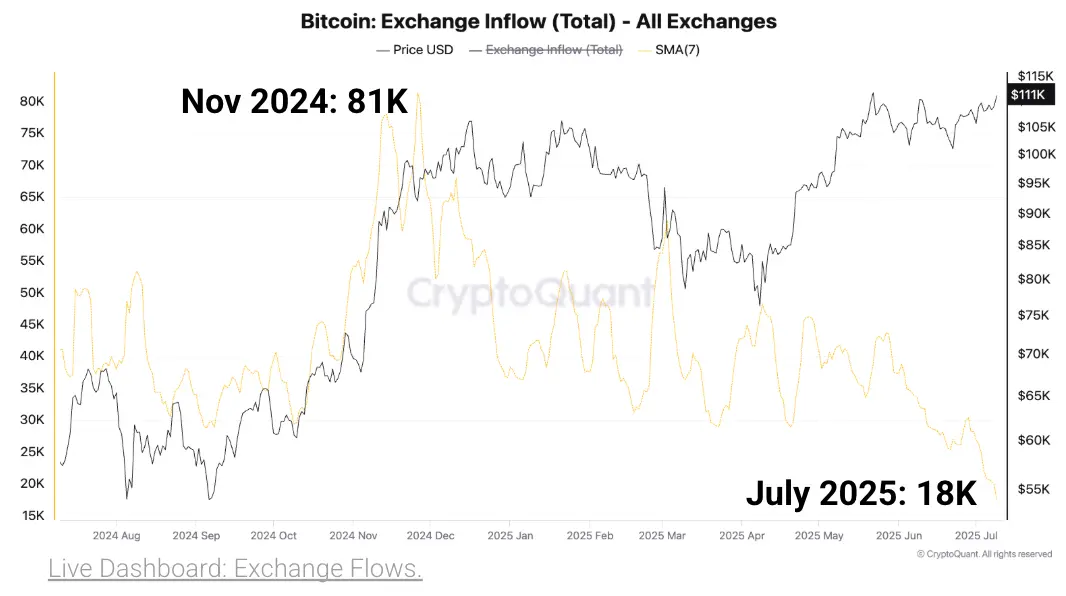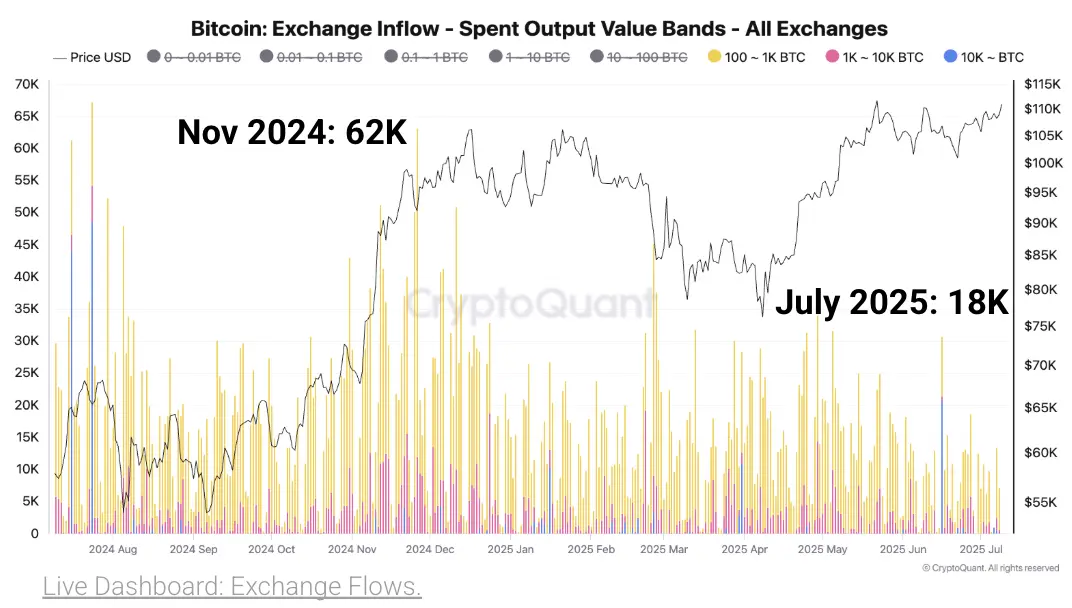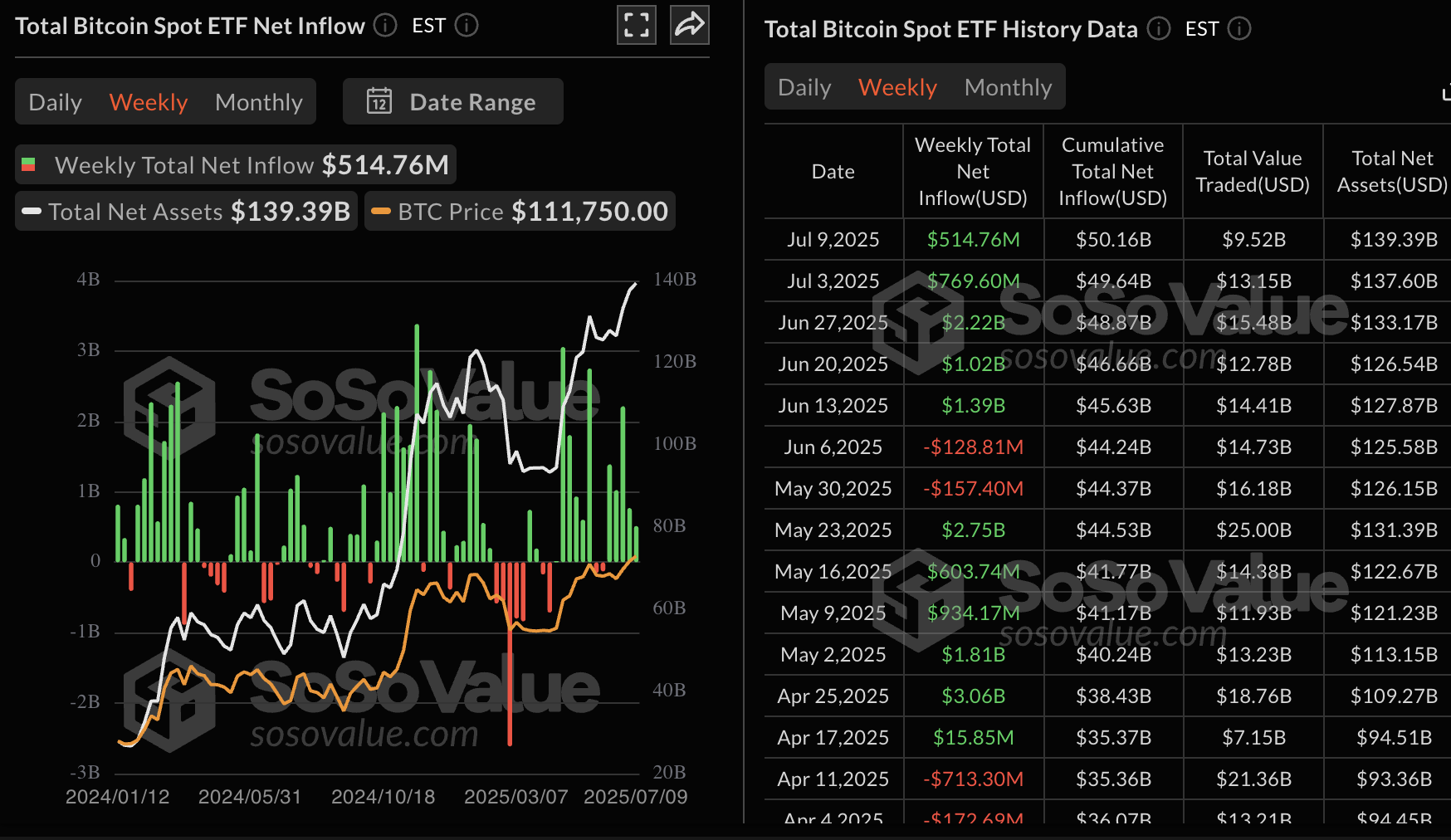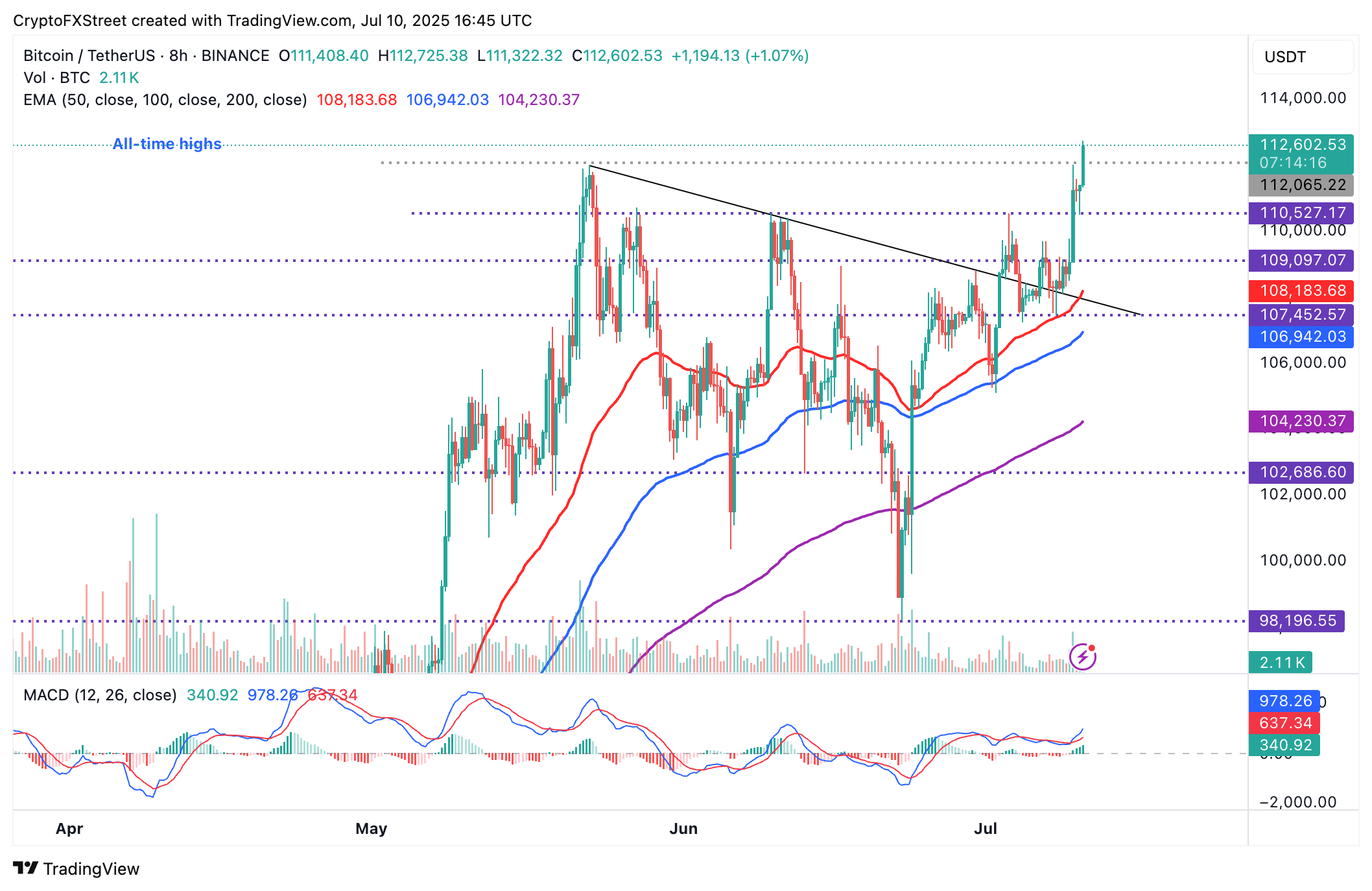Bitcoin Weekly On-chain Review: Three reasons BTC could extend rally after hitting fresh all-time high
- Bitcoin hits new record highs amid subdued selling pressure and steady institutional interest.
- Exchange flows drop to a ten-year low as large-volume holders send fewer coins to exchanges.
- Bitcoin spot ETFs' bullish streak hits the fourth consecutive day in a row, with a $218 million inflow on Wednesday.
Bitcoin (BTC) accelerated its uptrend, reaching new record highs above $113,000 on Thursday. The rally follows mounting uncertainty surrounding the resurgence of tariff-triggered volatility in global markets as the United States (US) seeks to finalize trade deals before August 1, when higher import duties take effect.
With the US Dollar Index (DXY), which tracks the US Dollar (USD) against six major foreign currencies, struggling to return above 100 from a multi-year low of around 96.38 seen on July 1, investors are actively taking refuge in riskier assets like Bitcoin, Ethereum (ETH) and Ripple (XRP).
The macroeconomic uncertainty also extends to the independence of the Federal Reserve (Fed) due to US President Donald Trump's incessant attacks on Fed Chairman Jerome Powell.
To gauge the potential for further Bitcoin price increases, investors should adopt a holistic approach, using critical on-chain data, fundamentals and macro factors like inflation trends.
1. Bitcoin selling pressure remains subdued
Bitcoin is trading in peculiar conditions, with selling pressure remaining significantly subdued despite the price rallying to a new all-time high on Thursday. According to CryptoQuant, the total daily Bitcoin exchange inflow has fallen to 18,000 BTC, the lowest level since April 2015.
A persistent drop in the Bitcoin Exchange Inflow metric, as seen in the chart below, indicates fading sell-side pressure from fresh capital flows. Inflows to exchanges surged, exceeding 81,000 BTC on November 26, when Bitcoin price first broke above the $100,000 mark.

Bitcoin Exchange Inflow metric | Source| CryptoQuant
2. Bitcoin whales send fewer coins to exchanges
The amount of Bitcoin sent to exchanges by the cohort of investors with 100 or more BTC is down from 62,000, as of November 26, to only 7,000 BTC observed on Thursday, per the CryptoQuant chart below. Notably, the fewer BTC coins flowing into exchanges from large-volume holders indicate declining selling pressure.

Bitcoin Exchange Inflow metric | Source: CryptoQuant
3. Steady institutional interest could keep Bitcoin price elevated
Bitcoin spot Exchange Traded Funds (ETFs) have become an important gauge for institutional interest. All 12 spot ETFs licensed in the US amassed a combined $770 million in inflow volume last week, according to SoSoValue.
The uptrend is on track, with approximately $515 million coming in this week, as seen in the chart below. Meanwhile, the cumulative total net inflow volume has crossed the $50 billion mark, with net assets averaging $139.4 billion.

Bitcoin spot ETF data | SoSoValue
Factors could accelerate Bitcoin's price rally toward $120,000, as predicted by Bitget's Research Chief Analyst, Ryan Lee. Traders should consider monitoring institutional interest and exchange flows to gauge market sentiment in upcoming weeks, with further price increases likely to boost risk-on sentiment.
Technical outlook: Bitcoin enters fresh price discovery phase
Bitcoin is trading above $113,400 at the time of writing as bulls tighten their grip, backed by rising risk appetite. The path of least resistance appears upward, underpinned by a buy signal from the Moving Average Convergence Divergence (MACD) indicator. If the blue MACD line holds above the red signal line, traders could prefer to seek exposure, expecting an extended price discovery toward the $115,000 and $120,000 thresholds.

BTC/USDT daily chart
Still, market participants should tread cautiously, aware that macroeconomic uncertainty due to tariff developments in the US could trigger fresh volatility and dampen the uptrend. Other factors that could hinder the rally include potential profit-taking and the need to collect more liquidity to fuel the next leg up.
Cryptocurrency prices FAQs
Token launches influence demand and adoption among market participants. Listings on crypto exchanges deepen the liquidity for an asset and add new participants to an asset’s network. This is typically bullish for a digital asset.
A hack is an event in which an attacker captures a large volume of the asset from a DeFi bridge or hot wallet of an exchange or any other crypto platform via exploits, bugs or other methods. The exploiter then transfers these tokens out of the exchange platforms to ultimately sell or swap the assets for other cryptocurrencies or stablecoins. Such events often involve an en masse panic triggering a sell-off in the affected assets.
Macroeconomic events like the US Federal Reserve’s decision on interest rates influence crypto assets mainly through the direct impact they have on the US Dollar. An increase in interest rate typically negatively influences Bitcoin and altcoin prices, and vice versa. If the US Dollar index declines, risk assets and associated leverage for trading gets cheaper, in turn driving crypto prices higher.
Halvings are typically considered bullish events as they slash the block reward in half for miners, constricting the supply of the asset. At consistent demand if the supply reduces, the asset’s price climbs.

